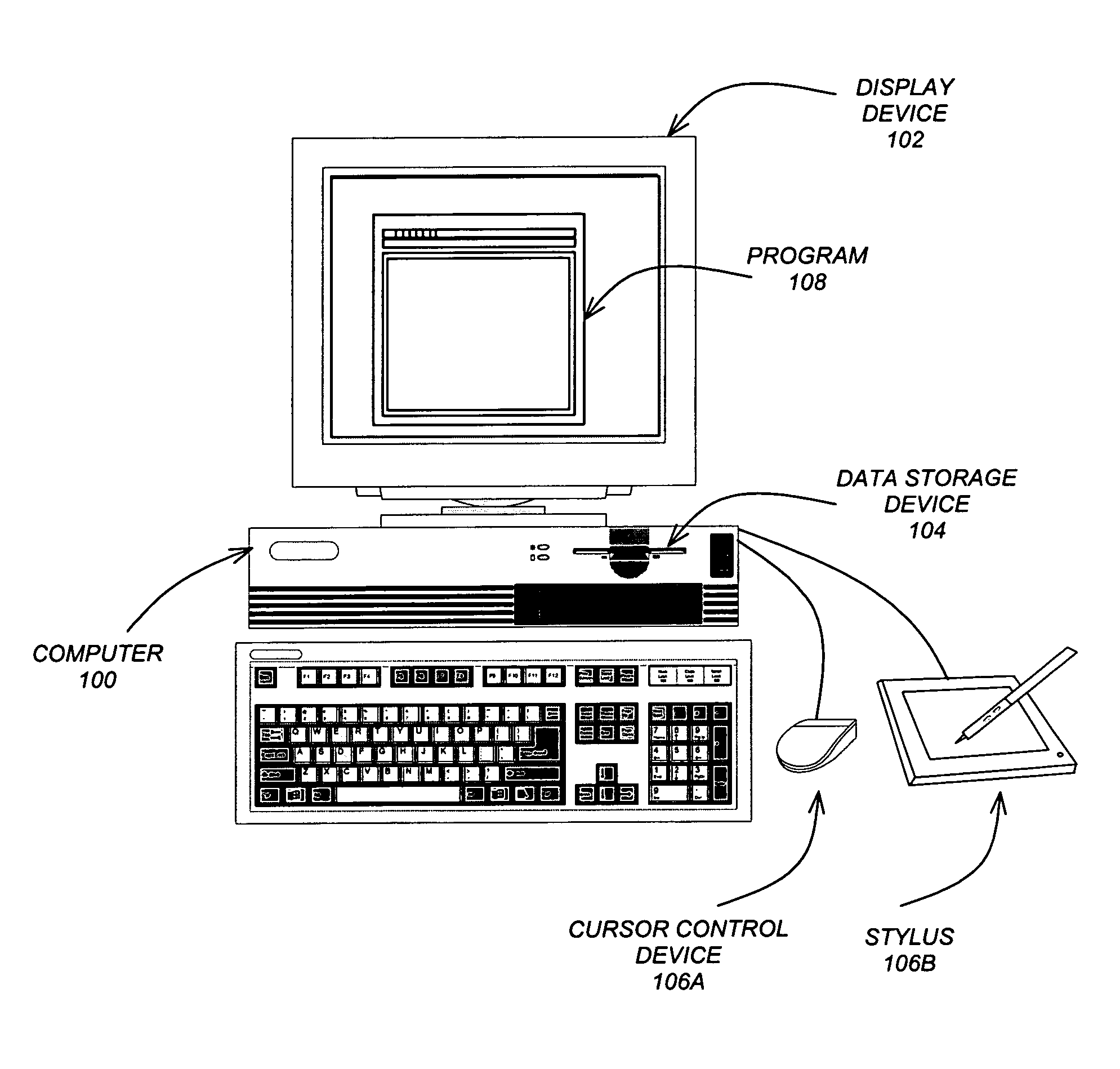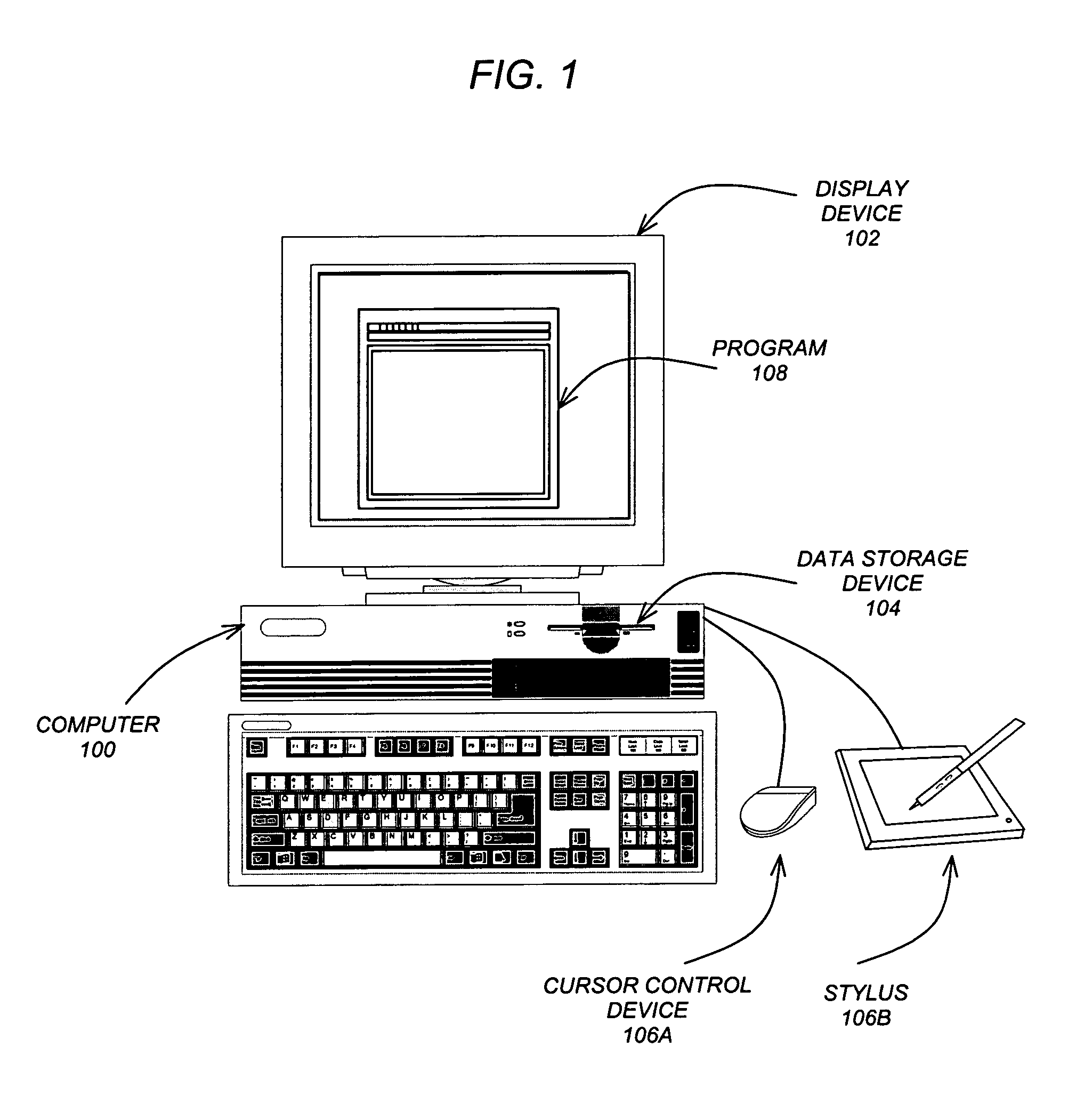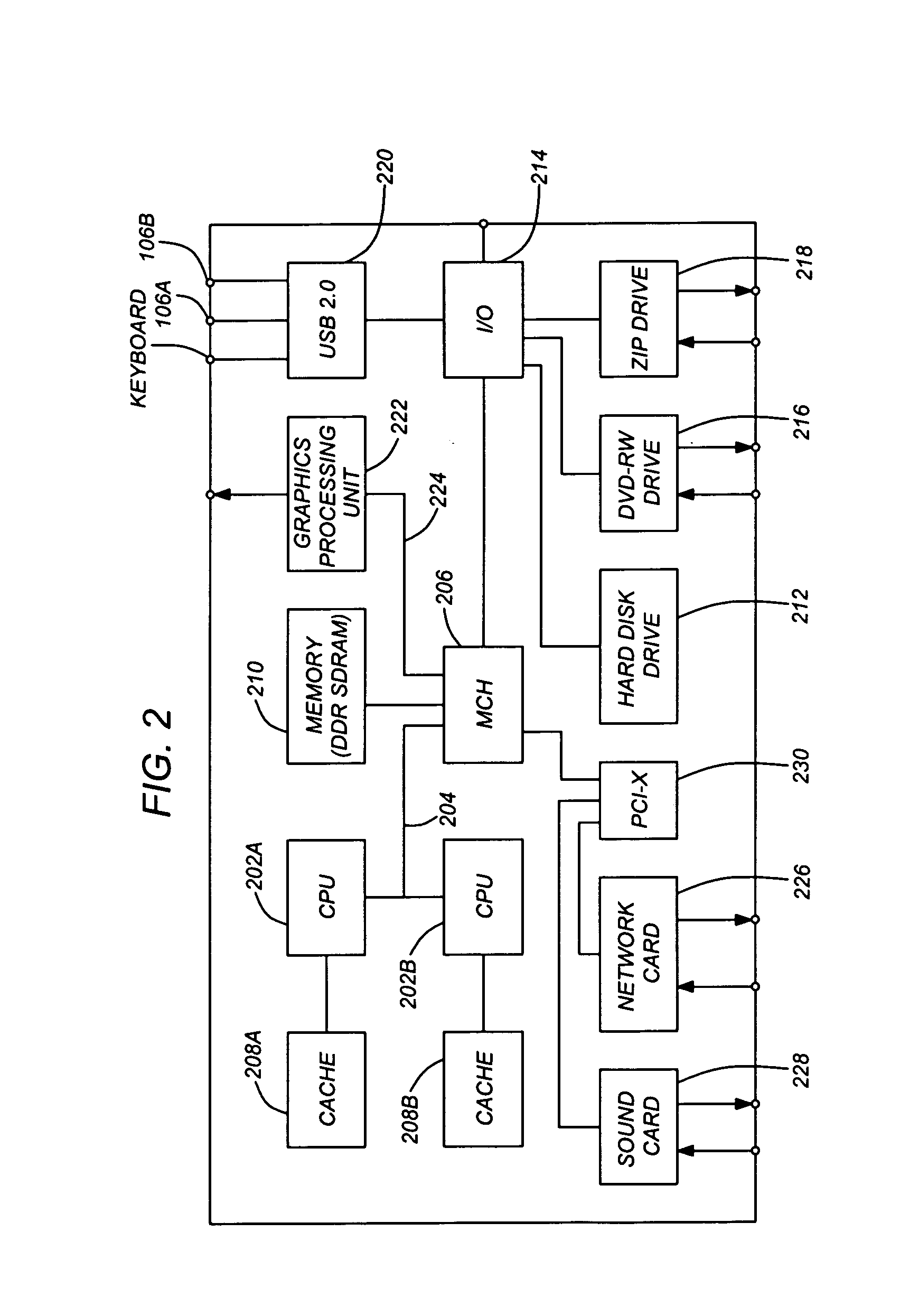Method for rendering global illumination on a graphics processing unit
a graphics processing unit and global illumination technology, applied in the field of three-dimensional (3d) model illumination, can solve the problems of difficult to achieve real-time performance with global illumination, many limitations in visibility systems, and the complexity of scene rendering schemes used to achieve real-time walkthroughs of complex 3d models. achieve the effect of handling extremely large models
- Summary
- Abstract
- Description
- Claims
- Application Information
AI Technical Summary
Benefits of technology
Problems solved by technology
Method used
Image
Examples
Embodiment Construction
[0067]In the following description, reference is made to the accompanying drawings which form a part hereof, and in which is shown, by way of illustration, several embodiments of the present invention. It is understood that other embodiments may be utilized and structural changes may be made without departing from the scope of the present invention.
Observations
[0068]To better understand the invention, some observations on g-buffers and deferred shading are useful.
[0069]Storage Structure for Photons
[0070]Of the number of ways of looking at what a g-buffer actually is, one fruitful view is as a storage structure for a mass of photons. The structure uses the GPU rasterizer and z-buffer to produce all the first level ray intersections from a single point or parallel direction into the scene. Those same photon locations may be re-used to accumulate the light from the scene. As such, each g-buffer also represents a sampling of the scene, though incomplete. Also, a g-buffer has interesting...
PUM
 Login to View More
Login to View More Abstract
Description
Claims
Application Information
 Login to View More
Login to View More - R&D
- Intellectual Property
- Life Sciences
- Materials
- Tech Scout
- Unparalleled Data Quality
- Higher Quality Content
- 60% Fewer Hallucinations
Browse by: Latest US Patents, China's latest patents, Technical Efficacy Thesaurus, Application Domain, Technology Topic, Popular Technical Reports.
© 2025 PatSnap. All rights reserved.Legal|Privacy policy|Modern Slavery Act Transparency Statement|Sitemap|About US| Contact US: help@patsnap.com



